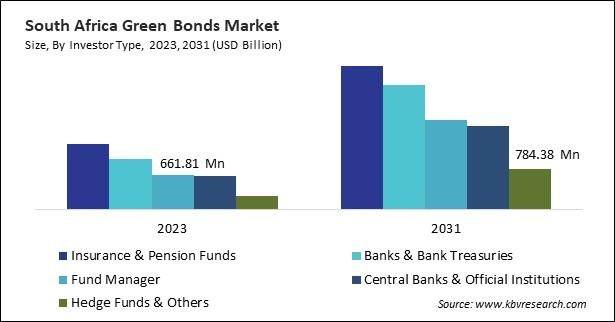The Latin America, Middle East and Africa Green Bonds Market would witness market growth of 11.3% CAGR during the forecast period (2024-2031).
The Brazil market dominated the LAMEA Green Bonds Market by Country in 2023, and would continue to be a dominant market till 2031; thereby, achieving a market value of $20,377.8 million by 2031. The Argentina market is showcasing a CAGR of 12% during (2024 - 2031). Additionally, The UAE market would register a CAGR of 10.3% during (2024 - 2031).

This market has been significantly expanded by multilateral organizations and development banks, in addition to regulatory initiatives. Institutions like the World Bank, International Finance Corporation (IFC), and Asian Development Bank (ADB) have issued these bonds to finance large-scale renewable energy projects, climate resilience programs, and sustainable urban planning in emerging economies.
This market has also witnessed innovations in sustainability-linked bonds (SLBs), blue bonds, and transition bonds. While traditional green bonds finance specific environmental projects, SLBs are tied to a company’s overall sustainability performance, with financial penalties for failing to meet carbon reduction targets.
This market in LAMEA is expanding rapidly, driven by strong government commitments, climate finance frameworks, and investor demand for ESG-aligned assets. Brazil is at the forefront of green bond issuance in Latin America, strongly focusing on sustainable building and urban infrastructure. The United Arab Emirates (UAE) is spearheading the Middle East's transition to green finance by utilizing these bonds to finance sustainable transportation and mobility solutions. Under the UAE Net Zero by 2050 Strategic Initiative, the government has launched multiple green bond programs to finance electric vehicle (EV) charging stations, metro expansions, and hydrogen-powered transport systems. South Africa has pioneered green bond issuance in Africa, with a strong focus on land conservation, biodiversity protection, and sustainable agriculture. The South African Green Finance Taxonomy, introduced in 2022, provides a framework for green bond issuances supporting forest restoration, carbon sequestration, and climate-resilient farming projects. Hence, as governments continue to align their infrastructure projects with global climate targets, this market in the region will play a critical role in funding the transition toward a sustainable and low-carbon economy.
Free Valuable Insights: The Worldwide Green Bonds Market is Projected to reach USD 1086.47 Billion by 2031, at a CAGR of 9.6%
Based on Issuer, the market is segmented into Corporates, Financial Institutes, Sovereigns, Development Bank, Government Agencies, and Municipals. Based on Investor Type, the market is segmented into Insurance & Pension Funds, Banks & Bank Treasuries, Fund Manager, Central Banks & Official Institutions, and Hedge Funds & Others. Based on Application, the market is segmented into Energy, Building, Transport, Water, Waste, Land, and Other Application. Based on countries, the market is segmented into Brazil, Argentina, UAE, Saudi Arabia, South Africa, Nigeria, and Rest of LAMEA.
By Issuer
By Investor Type
By Application
By Country
Our team of dedicated experts can provide you with attractive expansion opportunities for your business.

